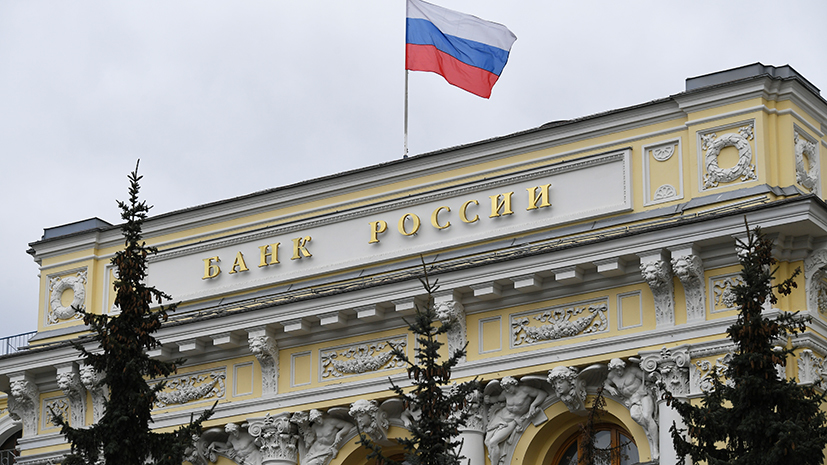On Monday, June 1, the Russian currency shows a positive trend on the Moscow Exchange. During the opening of trading, the dollar fell by 0.6% and for the first time since March 6 reached 69.6 rubles. The euro fell by 0.3% to 77.6 rubles.
In May, the national currency strengthened against the dollar by 5.7%, and against the euro by 4.3%. The ruble rose in price for the second month in a row and was able to compensate for more than half of the March collapse.
“The May ruble appreciation was a continuation of the April trends. After reaching crisis values in early March, the national currency began to recover and over the past two months has become one of the leaders in growth among analogues of developing countries, ”said Mikhail Zeltser, stock market expert at BCS Broker.
According to him, support for the Russian currency is provided by rising oil prices. In May, the cost of raw materials of the reference brand Brent on the ICE exchange in London has grown significantly and is now trading above $ 37 per barrel. Experts explain the positive dynamics of quotations by the gradual restoration of the balance of oil supply and demand in the world market.
Amid weakening of quarantine measures in a number of countries, people and enterprises began to return to work, and global fuel consumption began to grow. According to estimates by the International Energy Agency (IEA), in May the number of people in the world living in conditions of restrictions fell to 2.8 billion, compared with 4 billion in April.
In addition, from May 1, in order to combat the global surplus of energy resources in the country, the OPEC + participants, including Russia, began to reduce hydrocarbon production by 9.7 million barrels per day. A decrease in production also began in several other countries - exporters of raw materials, including the USA, Norway, Argentina and Canada. Moreover, Saudi Arabia announced its intention to further reduce oil production by another 1 million barrels per day.
According to IEA estimates, in May the supply of oil on the world market was supposed to decrease by 12 million barrels per day. According to the Russian Ministry of Energy, in the following months, the total volume of reduction in production by world hydrocarbon producers may reach 15-20 million barrels per day.
According to experts, in the near future investors will be focused on the next OPEC + meeting, which is scheduled for June 9-10. However, the parties to the transaction are considering the possibility of holding a meeting earlier - June 4. About this writes TASS, citing sources. According to Mikhail Zeltser, the extension of the partnership under the agreement will lead to an additional increase in oil prices and will positively affect the ruble.
“The situation in the energy market will play a crucial role in the exchange rate formation of the ruble. The benchmark is the increase in Brent oil prices to $ 40 per barrel in June. Adherence to the early agreements of oil-producing countries under OPEC + will have a beneficial effect on commodity prices, and the restoration of global demand in the wake of the phased opening of global economies will lead to a return of oil prices to pre-crisis values, ”the expert added.
- © Maxim Blinov / RIA News
At the same time, the actions of the Central Bank will continue to play in favor of the ruble. On March 10, the Central Bank began proactive sales of foreign currency in the domestic market. Thus, the regulator increases demand for rubles and thereby supports the Russian currency. In addition, already in June, the Bank of Russia can once again reduce the key rate from the current 5.5% per annum and thereby additionally support the national currency.
“The rate can be reduced to 5% or 4.75% per annum. Moreover, as you know, interest rates strongly affect the ruble exchange rate. The rate reduction by the regulator over time lowers the yield of federal loan bonds, and therefore investors are trying to pre-purchase securities at a bargain price. The rush of money flowing into the Russian OFZs will support the ruble, ”said Alexei Korenev, an analyst with Finam Group, RT.
The slowdown in the spread of coronavirus in Russia may also have a positive effect on the Russian currency. This point of view in a conversation with RT was expressed by Natalya Milchakova, deputy head of the Alpari information and analytical center.
“According to doctors, the peak of the coronavirus epidemic in Russia has already been passed. This fact gives hope to the participants in the foreign exchange market for the restoration of the Russian economy in the second half of this year, ”explained Milchakova.
According to her, some pressure on the ruble may have a possible exacerbation of US relations with China. Thus, the growing tension between Washington and Beijing risks provoking an outflow of funds from the assets of developing countries and negatively affect the Russian currency.
At the same time, the experts surveyed do not expect the ruble to weaken before the end of summer. According to Mikhail Zeltser, in June the dollar may drop to 68 rubles, and the euro - to 75 rubles. In turn, the leading Forex Optimum analyst Ivan Kapustyansky believes that before the end of the summer, rates will fluctuate in the ranges of 67–70 and 75–77 rubles, respectively.

